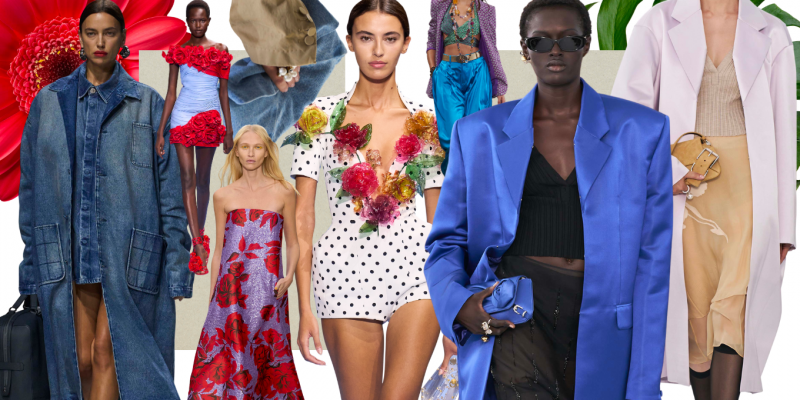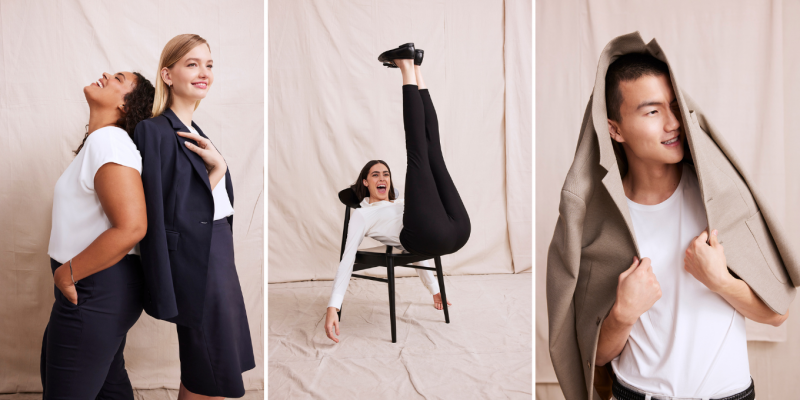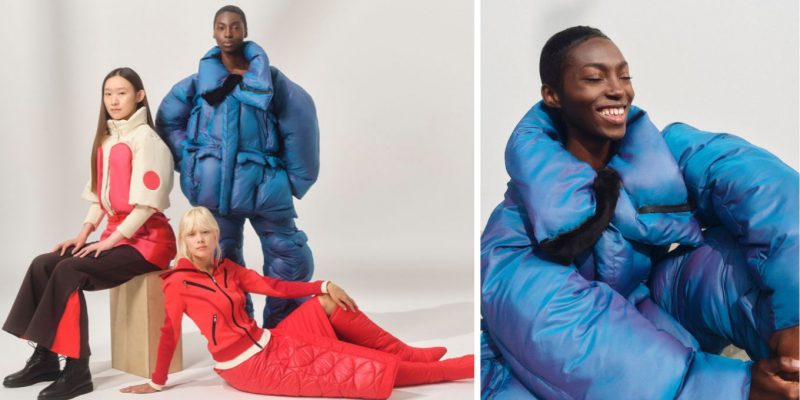Trends
How to Navigate the New Work Wardrobe
A former fashion editor on acquiescing to the office dress code.
by : Janna Zittrer Appleby- Mar 6th, 2019

During my decade as a freelance fashion and beauty writer, I spent my days darting between buzzy press previews and product launches all over Toronto. A typical outfit would look something like this: distressed jeans, a black Mackage leather jacket and Nike Air Max 95 OGs. If I was feeling a little fancier, I might throw on a pair of culottes with a French-tucked T-shirt, possibly adding Oscar de la Renta silver drop earrings shaped like petals. On my way out the door, I would grab my top-handle Saint Laurent bag, never considering something as mundane as whether a homemade lunch would fit inside. These outfits, with their sense of deliberate effortlessness, showed off the best and truest version of me.
Times have changed — and not just sartorially speaking. Earlier this year, I left freelance life behind to accept a full-time position at a large travel company. With a mortgage, a nine-month-old baby and a self-employed spouse, I found the siren call of steady paycheques and dental coverage too strong to resist. Before my first day, I stressed over the rigid schedule and rush-hour commute, but I never expected my biggest challenge to be adapting to the strict office dress code. Like many corporate spaces, my place of work prohibits denim (save for dark washes on business-casual Fridays) as well as running shoes. Bare shoulders and visible tattoos are a no-no. And while it’s not explicitly spelled out in the code, word has it that bold-coloured nail polish is frowned upon too.
At work, I’m greeted by colleagues dressed in simple cuts and sombre hues. I used to dress to stand out, but now I feel the pressure to blend in. My “me clothes” hang patiently in my closet, waiting for the weekend to roll around, while I dissolve in a sea of neutrals, wearing a nondescript daily uniform — straight-leg trousers (it was nice knowing you, jeans), simple cashmere sweaters and low-heeled booties. And I struggle, because fashion was more than just a career. Getting dressed was an art form I had been honing ever since I discovered as a young girl that I couldn’t paint or draw to save my life. Suddenly, jarringly, styling outfits had gone from being a source of pure joy to a dreaded time suck. I’m breaking through my mid-30s, yet I hardly recognize this subdued, buttoned-up version of myself.
That’s not to say there aren’t benefits to dressing the part. According to research published in the journal Social Psychological & Personality Science in 2015, dressing more formally can improve one’s abstract thinking. And while I was never swept up by the capsule-dressing concept (that is, relying on a small and logical selection of clothing you love to wear), there’s no denying that a uniform can save you time and effort, sparing you from digging through your closet for a coherent outfit. Even so, I can’t shake the feeling that dress codes are becoming increasingly outdated in many fields, especially in an era of increased telecommuting and ubiquitous tech start-ups with their penchant for hoodies and Allbirds runners. As the individuality-minded Gen Z enters the job market and personal-style-championing millennials continue climbing the corporate ladder, surely it’s only a matter of time.
Much as I want to make a good impression as I navigate my first full-time job in more than 10 years, I, of all people, know that fashion doesn’t preclude substance and that caring about clothes doesn’t invalidate my talents or skills. So why do I feel the need to temper my sense of style in order to be taken seriously? After all, if Meghan Markle can shake up royal protocol with (gasp!) dark nail polish and Michelle Obama can wear glittery thigh-high Balenciaga boots to promote her book (albeit with pushback from the internet about dressing “appropriately”), what’s stopping me from getting the job done in a belted leather skirt with a half-tucked sleeveless top? Even the spring runways are on my side, with Burberry’s mixed-print separates, Max Mara’s subtly ruffled detailing and Theory’s soft tailoring all making a strong case for power dressing done beautifully.
Still, fashion revolutions don’t happen overnight — especially in the land of cubicles — so in the meantime, it’s up to me to strap on a pair of studded Chloé booties and stop toeing the line. Sure, I might raise a few eyebrows, but I can’t expand my definition of what’s work appropriate unless I consciously (and respectfully) rebel. My day-to-day life will never be the fashion show it once was, and maybe that’s okay as long as I can earn my living without erasing my sense of style — and myself.
This article first appeared in the April 2019 issue of ELLE Canada.
Newsletter
Join our mailing list for the latest and biggest in fashion trends, beauty, culture and celebrity.
Read Next

Fashion
Are Fashion Brands Getting Greener?
While the fashion industry is making a lot of noise about being more sustainable, a closer look shows that its earth-friendly commitments are often more illusion than reality.
by : Marouchka Franjulien- Apr 19th, 2024

Beauty
What Beauty Packaging Is Actually Sustainable?
We sought out leaders in the field to help us get to the bottom of the blue bin once and for all.
by : Victoria Christie- Apr 19th, 2024

Culture
This University Elevates Women to New Professional Heights
You shouldn’t have to pause your life to move forward in your career.
by : ELLE Canada- Apr 16th, 2024




